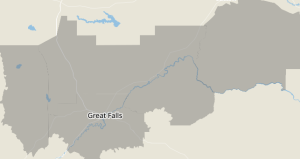As classrooms continue to evolve beyond textbooks and chalkboards, digital literacy has become the new cornerstone of modern education. But this is not the digital literacy of a decade ago — it’s no longer just about using devices or navigating software. In middle and high schools today, digital literacy means learning to think critically online, communicate responsibly, and understand the moral weight of a send button.
Here’s what this article explores:
-
- How schools are redefining digital literacy for the modern world
- The role of online safety and ethical use in shaping responsible digital citizens
- How critical thinking and digital communication prepare students for real-world challenges
- The surprising ways creative projects — like a digital yearbook — teach collaboration and media fluency
The Shift from Screen Time to Smart Time
Not long ago, digital literacy was taught as a set of technical skills — typing, file management, and PowerPoint slides. Today’s educators are rethinking that model. The goal is no longer proficiency, but purpose.
Schools are teaching students to navigate complex digital ecosystems where misinformation, privacy concerns, and algorithmic bias are everyday realities.
The modern digital classroom focuses less on “how to use a tool” and more on how to think while using it.
Responsible Use as a Core Life Skill
Digital responsibility isn’t just a unit in computer class anymore; it’s woven throughout curricula. Schools are emphasizing the ethics of online behavior — from plagiarism and data privacy to empathy and tone in digital communication.
This means teaching not just the mechanics of online life, but its morality. Students discuss what it means to be kind in a group chat, how to respect intellectual property, and how to pause before posting something that could follow them for years.
To guide this, many schools use a framework built around three core questions:
-
- Is it true?
- Is it necessary?
- Is it kind?
Those same questions apply whether writing an essay or sharing a meme.
The Human Side of Online Safety
Teaching online safety has matured far beyond the “don’t share your password” days. Today’s programs blend cybersecurity basics with emotional awareness. Students learn to spot phishing scams, understand privacy settings, and respond to digital harassment — but they also learn how online experiences affect their mental health.
Building Critical Thinkers in a Click-Driven World
Information is abundant — wisdom is not. That’s why critical thinking is now the crown jewel of digital literacy education. Students analyze news feeds, identify echo chambers, and test claims using evidence and logic.
Teachers encourage slow thinking in fast-moving environments. A ninth-grade civics class might spend a full week dissecting how a viral headline spreads, examining not just its accuracy but the emotional tactics that made it shareable.
As one educator puts it: “We’re teaching skepticism, not cynicism.”
A Digital Workshop in Collaboration: The Yearbook Project
One of the most effective — and joyful — ways schools are building digital literacy is through creative, collaborative projects. A standout example is designing a yearbook for schools using online digital platforms.
When students design a yearbook digitally, they do more than arrange photos and captions. They manage permissions, organize assets, assign roles, and collaborate in real time — all within a shared online workspace. These platforms offer tools for structured page layouts, photo management, and built-in editing, giving students firsthand experience with professional-grade digital publishing.
In the process, they learn teamwork, accountability, and the importance of digital stewardship — understanding that every image, every caption, and every edit contributes to a collective narrative.
What Students Actually Learn
Here’s what’s emerging from these new programs in schools across the U.S.:
-
- Critical discernment — separating fact from misinformation, even when it’s viral.
- Ethical resilience — knowing when and how to act responsibly online.
- Collaborative confidence — working effectively through digital tools and shared platforms.
- Civic digital fluency — understanding how online actions influence public discourse.
Students aren’t just learning to use tech. They’re learning to lead with it.
How to Foster Digital Literacy in Schools
The path to building digitally literate citizens isn’t a mystery, but it does require structure. Here’s a quick reference checklist schools are using to guide this shift:
Literacy Development Checklist
-
- Integrate ethics and responsibility into every digital activity
- Teach students to evaluate sources and detect misinformation
- Reinforce data privacy, online consent, and password hygiene
- Include mental health and digital wellness discussions
- Encourage collaborative, creative projects like multimedia yearbooks or podcasts
- Assess not just output (a slideshow) but process (teamwork, discernment, communication)
The Emerging Curriculum of Digital Citizenship
Many districts are formalizing these ideas into structured programs that pair technology skills with civic education. For instance, some schools have adopted interdisciplinary digital citizenship courses that merge English, civics, and computer science.
| Learning Area |
Core Focus |
Real-World Application |
| Information Literacy |
Source evaluation, bias detection |
Analyzing online news |
| Digital Ethics |
Respect, consent, accountability |
Social media conduct |
| Communication |
Tone, clarity, empathy |
Group projects & online forums |
| Media Creation |
Collaboration & design thinking |
Digital yearbook production |
| Cyber Safety |
Privacy, passwords, digital footprints |
Safe device use |
| Emotional Intelligence |
Mindful tech use, well-being |
Managing online stress |
Frequently Asked Questions
Why is this literacy more important now than ever?
Because nearly every aspect of civic life, from voting to job applications, happens online. Without digital literacy, students risk being left behind in both opportunity and understanding.
Are schools keeping up with technology’s pace?
They’re trying — and increasingly succeeding — by focusing less on tools and more on transferable thinking skills that outlast any single platform.
What can parents do?
Stay involved. Talk with children about what they see and share online. Model critical curiosity and responsible posting — digital literacy starts at home.
Teaching for a Future That’s Already Here
Digital literacy in middle and high schools is no longer about surviving the internet — it’s about thriving in it. As the line between human and digital communication blurs, schools are preparing students not just to navigate information, but to shape it.
In a world where every post is public and every message is permanent, true digital literacy means more than competence. It means character.








